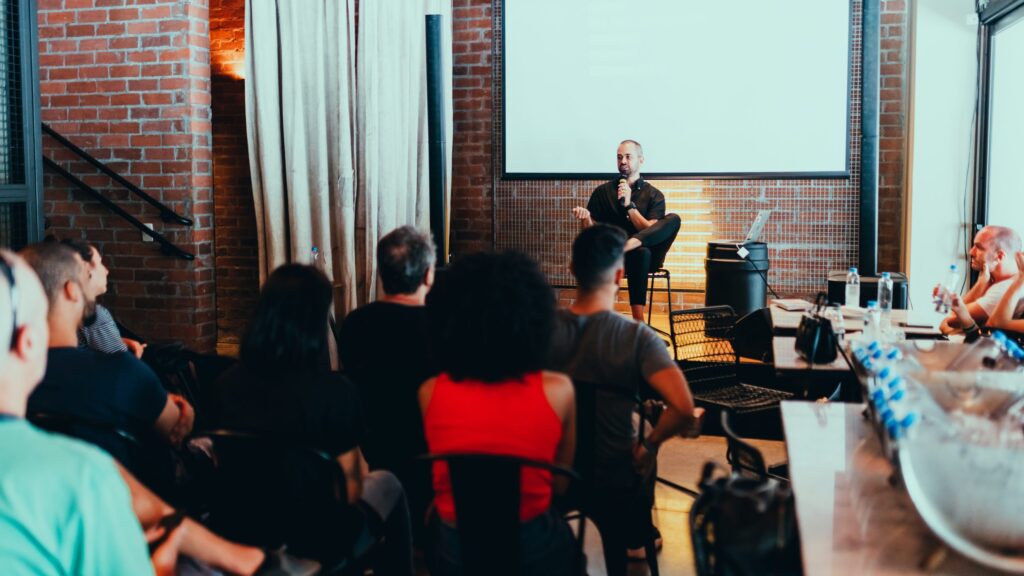Let’s talk about the core purpose of a sales kickoff (SKO). Many enablement professionals are either responsible for an SKO or participate in the planning and execution of one. However, most have not paused to ask themselves a critical question: WHY do we bring people together, traditionally one to two times a year, for a sales kickoff?
While practitioners know what they do when planning and executing a SKO, the why behind it can be overlooked. The purpose of this traditional event has historically been to connect, celebrate, energize, educate, and inspire teams by starting the selling year off strong. Thinking back to the days before video conferencing was a part of our daily routine, this was one of the few times team members actually saw everyone together. Enablement professionals often ensured that teams took advantage of this time by adding in one to three days of education, breakouts, and workshops.
But now, teams are accustomed to delivering education on an ongoing basis. Continuous enablement should be a part of a company’s revenue DNA by now. Now that enablement can train anyone, anywhere, through a variety of modalities, why are we really bringing everyone together?
If practitioners look at feedback from past SKOs and the experiences that participants wanted more of, it likely included more connection time, sharing of ideas and collaborating with teams. Sitting in conference rooms for hours on end is not usually the top-rated experience of a SKO for reps. Let’s face it, many of the participants are either jetlagged, tired, distracted, or hungover (hopefully not!). Not to mention, many of those conference rooms had two temperature settings: sweltering hot or freezing cold.
Now at the end of 2021, many enablement professionals have mastered the virtual event and are now considering a new type of “hybrid” event. But what does that even mean? A hybrid event, in the context of SKO, combines both an in-person experience, and a virtual experience for people not at the physical location of the event. While SKOs are traditionally in-person events, and historically were done without a virtual aspect. It was not uncommon many years ago to live-stream presentations on a stage to another location or remote attendees.
Last year, most organizations turned their SKOs into virtual events. With most teams at home, the event needed to run through streaming services, whether synchronously (live) or asynchronously (recorded and streamed). A hybrid event combines these two things, while most of the activity is happening live at a location. That means that what’s happening on a stage for a live audience is streamed for those at home, and likely recorded for viewing later.
This year, if organizations plan to host a live audience in a room of any significant size and teams in virtual locations, enablement practitioners will likely need to explore this hybrid concept. In fact, it may be a common way that events are run in the coming years. It is important to understand that the pandemic brought on a lot of “new normals” and hybrid events are likely here to stay.
Some of the common feedback from virtual events hosted in the pandemic were that attendees appreciated the ability to hear and consume content without investing the time it took to travel to the event. Events being many time zones and hours of flights away were just not accessible to many. Recordings of the event were more likely to fit in someone’s schedule than a live event, allowing attendance to potentially increase, which can be a big advantage for overall communication and collaboration with other parts of an organization.
A virtual event can be designed for anyone, anywhere. It does not replace the benefit of being in the same room together. However, the concept of being in a room with a large number of other individuals may not be comfortable for many folks for years to come. In planning a SKO in this new environment, consider these tips.
Tip #1: Build Goals Around the Purpose
Go back to the goals of the event, or if these haven’t yet been established, build them around what the event is truly bringing people together for: connections, celebrations, energy, and education.
Every day and section of the agenda should align to one or more of these purposes. The energy that comes from gathering many humans together in a room can occur very naturally. When teams recognize and celebrate each other, that becomes even more true. Similarly, presentations are often designed to convey new information while generating excitement around learning. Not to mention, getting to see colleagues again post-pandemic may be a first for many attendees, so it is important to understand the level of excitement and anticipation that will exist.
Most practitioners have likely seen SKOs that were well organized and well run, but at the end of the event, the content did not create the momentum that it was expected to. It is important to ensure that every presentation has a “What’s In It For Me?” and “What Is In It For Us?” (WIIFM and WIIFU) message included. What are the key points to each presentation and what do you want the audience to do or feel after the event? It may be a message, a new pitch or asset, or it may be a new set of questions to ask in the sales motion. Ensure the audience’s experience post-event is very clear.
Tip #2: Center the Participant’s Experience
One of the best ways to make a SKO event meet key goals is to focus on the participant experience. To do so, consider some of the following questions:
- What are they doing when they arrive?
- Who are they interacting with?
- What do they see?
- How long have they been sitting and watching a presentation?
- Have they had the opportunity to ask questions?
- Are they engaging in the content?
- What are the presenters doing to keep the audience engaged?
- Is the topic relevant?
Since there are multiple types of participants in a SKO, prioritize efforts by focusing on the experience of the in-person attendee, the virtual attendee who is joining live, and the person watching a recording of the event. Consider ways to engage live participants with real-time questions through tools like chat or polls. While someone watching pre-recorded content won’t expect this to happen, ensure there is a clear way to ask questions about each topic. There could be a centralized chat channel they can use or a point of contact to send questions to. This will help make the event as engaging as possible with two-way communication.
Tip #3: Ensure the Company is Ready for a Hybrid Event
This may seem obvious, but not everyone in an organization may be ready to get back together in one room with a large number of people. Start by conducting surveys to discover how many people would actually be on site if an in-person component were offered. This will determine the logistics for the conference space and hotel rooms needed, but will also give teams an idea of the sentiment across the organization. For example, while airplane travel may not be required for local attendees, some may not be comfortable with attending in-person or may only be able to fit part of the event in their schedule, and as such will plan to attend virtually.
Running a hybrid event can often cost just as much if not more than a fully in-person event due to the addition of audio/visual requirements needed to bring an event to virtual participants. While the costs of virtual attendance may not impact an organization’s bottom line, the platforms needed likely present a cost increase.
Even though organizations may have been using video conferencing tools to connect everyone virtually over the last year and a half, that won’t always meet the audio and visual needs of virtual participants when there are more than a few people in a room together. For example, teams might need a way to connect a speaker’s microphone to the audio input for the virtual meeting, as well as high-quality cameras to show the speaker and bring the experience of the crowd to the virtual participants. Depending on the dynamics, practitioners might need to explore platforms designed for streaming virtual and live events.
Tip #4: Engage Human Resources Teams for Guidance
It will be important to operate within the guidelines of one’s company, country, state, and local health codes. For example, there may be restrictions for travel, especially international travel. Human resources teams often have a close pulse on the organization and employee preferences. Since planning hybrid events may be new for many practitioners, and HR teams have not typically played an active role in the planning process traditionally, it can be beneficial for enablement and HR to partner closely to ensure the event is safe and enjoyable.
With these tips, enablement teams can explore, select, and execute the event that matches the company and organizational goals. Hybrid SKOs are new territory for many, which means it is an opportunity to learn and improve going forward. By supporting each other in the planning process, enablement professionals can help navigate the new normal of SKO together.
This is the first of a two-part series profiling the adventures of a team that shifted a large event to virtual, and then this year, shifting it to a hybrid event. Stay tuned for the second article detailing the findings, best practices, and key takeaways to leading a successful event.






